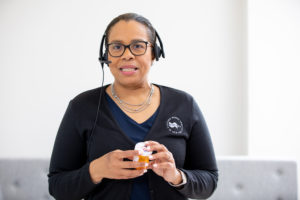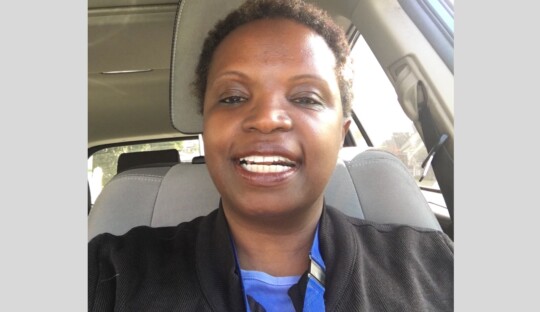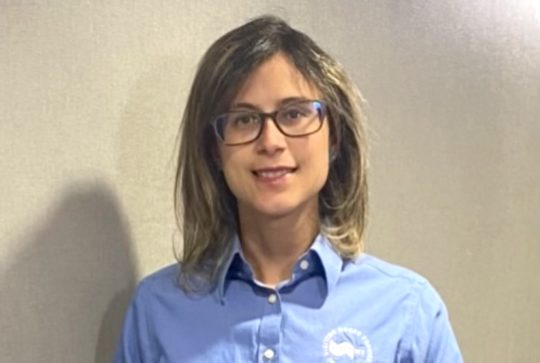VNSNY Care 360° Solutions Uses Talent and Telemedicine to Keep Patients Safe During the COVID-19 Crisis
 The telehealth alerts were potentially alarming: a VNSNY CHOICE member in her nineties with multiple chronic conditions was presenting with a low-grade fever and shortness of breath. When Geralda Pelissier, a nurse practitioner with VNSNY Care360° Solutions (VNSNY’s new care management division), followed up telephonically, she could hear from the member’s speech pattern that she was struggling more than usual for breath.
The telehealth alerts were potentially alarming: a VNSNY CHOICE member in her nineties with multiple chronic conditions was presenting with a low-grade fever and shortness of breath. When Geralda Pelissier, a nurse practitioner with VNSNY Care360° Solutions (VNSNY’s new care management division), followed up telephonically, she could hear from the member’s speech pattern that she was struggling more than usual for breath.
While Geralda always strives to keep her patients healthy at home and out of the hospital, the stakes are particularly high now for vulnerable New Yorkers. Emergency rooms and ICU beds in area hospitals are packed to capacity with nearly 9,800 COVID-19 patients, a number that grows each day. Not only are ER clinicians sorely overburdened, but a visit to the ER can also bring its own risk of contracting COVID-19 from the patients already there.
In the case of this CHOICE member, Geralda immediately triaged her by phone, assessing her for a number of conditions, including COVID-19, sepsis, and possible reaction to an antibiotic she had just started taking for a urinary tract infection.
The member’s symptoms—which also included a low-grade fever, vomiting and fatigue—suggested any number of conditions, but Geralda suspected that the new antibiotic was the most likely culprit. To make certain, she called in Community Paramedics, a collaborative program between VNSNY and Mount Sinai Health System that provides in-home emergency care to patients in distress. “Once someone can actually visit with the patient, it’s easier to have confidence that she’s okay,” explains Geralda.
A Community Paramedics clinician made a prompt visit to the member’s home in facemask and gloves. With phone consultation support from Geralda, the clinician determined that the member was stable and could remain at home, using her nebulizer regularly and switching to a different antibiotic.
“This required a very quick assessment and observation by the nurse practitioner, using our team’s telemedicine technology and extraordinary clinical skills,” says Rose Madden-Baer, Senior Vice President of Population Health and Clinical Support Services. “This was a truly heroic story of our team coming together to avoid exposing someone with underlying conditions to an ER potentially filled with people suffering from COVID-19.”
 By the following morning, Geralda had made sure that the member’s pharmacy and primary care provider updated her list of allergies to include the original antibiotic. In addition, June notified the member’s VNSNY CHOICE case manager, Katarzyna Blasik, who followed up with the member to make sure she continued to feel okay and was on the mend.
By the following morning, Geralda had made sure that the member’s pharmacy and primary care provider updated her list of allergies to include the original antibiotic. In addition, June notified the member’s VNSNY CHOICE case manager, Katarzyna Blasik, who followed up with the member to make sure she continued to feel okay and was on the mend.
“The whole process was so smooth,” says June Stanley, Vice President of Clinical Operations for VNSNY CHOICE. “People may think of the health care system as fragmented, but in this case there was perfect coordination of all the care this member needed.”
The successful outcome shows how telemedicine can keep vulnerable people closely connected to care from the comfort of their homes. “What’s coming out of the COVID-19 pandemic is an understanding of the important role of telemedicine in health care,” adds Rose. “Our clinicians can remotely monitor a patient’s weight, blood pressure, temperature, heart rate and blood oxygen levels, and blood glucose levels, and even listen to their respiration and heartbeat. This is urgent care being done right in the home—without sending someone to an urgent care facility.”


